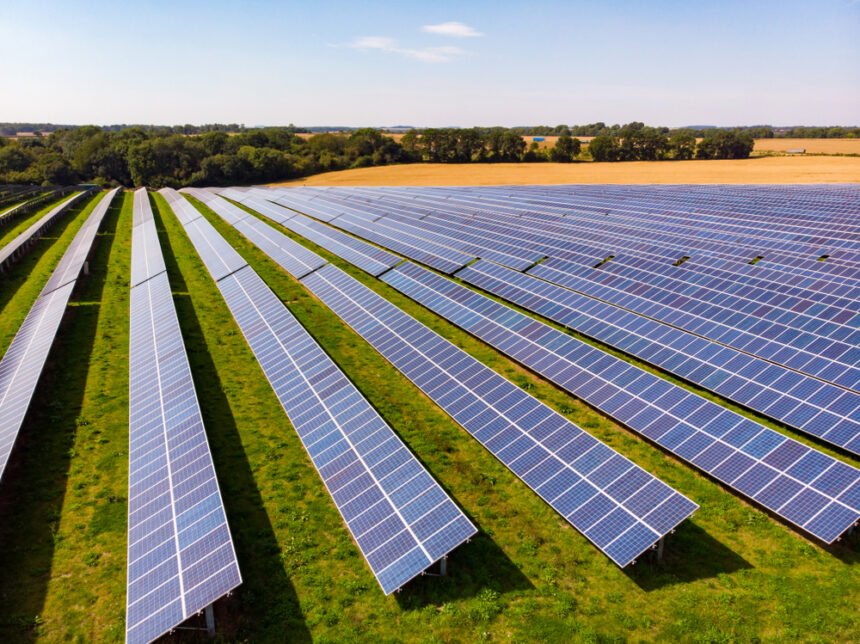The Internet of Things is one of the fastest growing industries. It grew 22% last year and is projected to grow further in the future.
Many industries are helping drive growth for the IoT. One of the most significant is the solar energy sector. More solar manufacturers are turning to the IoT to get the most output for their customers.
Smart Solar is the Future of Renewable Energy
Currently, the energy sector is undergoing significant transformations due to growing environmental issues. In this case, there is a rapid transition towards sustainable power resources. The global supply of renewable electricity is increasing day in and day out. This is why most of the power sectors are focusing on the usage of solar power as an integral part of the world’s energy grid.
However, as the solar farm ramps up, energy companies are taking a new approach to manage their assets to ensure the smooth integration of renewables into the grid. This is why there is a need for expanding IoT applications in the power sector. The global smart solar market was worth over $8.5 billion in 2019 and is growing rapidly.
The challenges of Utility-Scale solar farms
It is quite a huge project to integrate and run on a utility scale. Photovoltaic solar energy can come with high unpredictability. Any changes in weather conditions such as the solar radiations and ambient temperature can cause fluctuations and instabilities in the power outputs.
In this case, there is a need for conscious environmental monitoring at solar farms to ensure that consistency is maintained. This will as well ensure accuracy in forecasting power generation rates and respective grid adjustments.
To handle large-scale solar operations requires something more than dependable external conditions. To properly optimize the overall solar farm efficiency, every solar panel must operate at its peak capacity. This explains the growing number of solar companies turning to big data. Measuring the total power output of the farm is not the only issue. The most challenging part is recording all that is happening at every individual module. To optimize solar farm operations, the farm will require the incorporation of IoT technologies.
The IoT is quite a breakthrough in remote monitoring helping energy companies to manage their solar power production effectively. The reduced sensor costs and the emergence of innovative connectivity can enable the simple and affordable deployment of granular monitoring networks in large-scale solar farms. Such networks enable operators to collect external and production parameters panel-by-panel and as well access this data from a central interface. It has opened the possibilities of improving the efficiency and reliability of solar energy systems.
Here are 3 major ways in which the IoT is changing the solar industry.
1. It improves asset performance
The IoT technologies enable the integration of more distributed resources into the grid. There are other different known ways in which the IOT technologies can improve grid management. By placing sensors at substations and along distribution lines the system can provide real-time power consumption data that is of great help to the energy companies when making decisions on energy control, load switching, network configurations, and many more.
2. Prevent theft and vandalism
Monitoring your solar and battery systems through the IoT system is a powerful tool to secure your power systems against theft and vandalism attempts. This is especially so if you live in rural areas. Here, the IoT sensor can detect suspicious movements around the power equipment and know when it is dismantled from the supporting structure. After such detection, the system will trigger an automatic alarm to alert the operators who will immediately take action.
3. Effective production forecast
Apart from the reactive response, the IoT for renewable energy includes effective production forecasts and improves grid stability. Since there is enough historical data, the energy companies can apply analytical and predictive models to calculate power generation rates under certain weather conditions.
This can help them anticipate how much solar energy can be produced on certain days and how other energy resource inputs can be adjusted. In connection to this, Tesla home power battery technology is one of the most used energy supply programs to supply energy power. Tesla Powerwall has gone IoT direction. With the help of the IoT, the Tesla Powerwall can give solar battery users a closely monitored way of storing energy for later use. Their powerwall system is equipped with energy monitoring and smart control of owner customization through the use of the Tesla app.
The system learns and adapts to your energy use and receives updates to add new features and enhance existing ones. These Tesla Powerwalls rechargeable home battery systems are installed alongside solar panels and integrated with IoT technologies. A powerwall system can be composed of up to 10 powerwalls including the combination of the modern powerwall + and the traditional powerwalls. The Tesla Powerwalls can intelligently power heavy equipment.
Through integrated revenue-grade metering, you can monitor your solar production and your home energy consumption.

